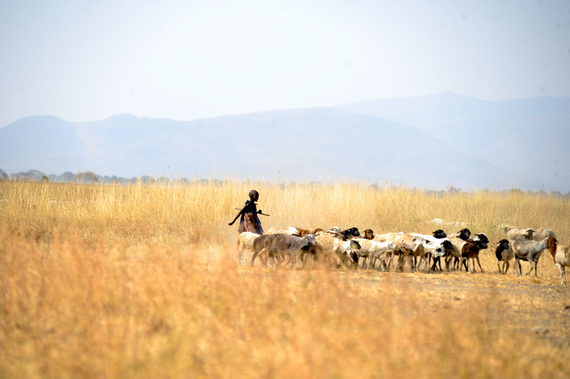Stop and take a breath. No matter where you live in the world, the chances are great that the air filling your lungs is polluted. Worldwide, roughly 9 out of 10 people live in places where air quality levels exceed the World Health Organization's safe limits.
Unfortunately, the air we breathe is getting worse not better. Between 2008 and 2013, air pollution levels increased by 8% among cities that monitored air pollution globally. Every year an estimated 6.5 million people die from lung cancer, chronic obstructive pulmonary disease, stroke and heart disease associated with air pollution.
The devastating consequences of air pollution affect both the climate and health. They are seen everywhere from smog-encircled mega-cities to village dwellings filled with smoke from indoor cooking. Yet virtually all air pollution is manmade - and often excessive.
Climate change compromises the essential prerequisites for good health - safe water, secure shelter and food security. Without them tens of thousands of lives are needlessly lost each year. Between 2030 and 2050, WHO estimates climate change will cause approximately 250,000 additional deaths per year, from undernutrition, malaria, diarrhea and heat stress.
A turning point in climate history
Fortunately, climate change is headed for a course correction. Last year, the Paris Agreement marked a turning point for climate change, when more than 190 countries agreed to keep the global average temperature rise this century well below 2 degrees Celsius.
However, much remains to be done to make this a reality.
As the Paris Agreement enters into force and parties to the Agreement meet in Morocco, "the right to health" must remain central to the climate actions implemented by all countries. If we look at history, the health sector provides the best evidence and arguments to sound the alarm and compel countries to take action.
In the 19th century, the health sector provided the evidence that contaminated water contributes significantly to disease and death, prompting investments in water and sanitation that prevented outbreaks, raised standards of living, and improved health outcomes.
In the 20th century, the health sector documented excess disease and death associated with air pollution. That evidence prompted a movement towards cleaner energy, more sustainable transport systems and urban planning that can reduce exposure to harmful emissions.
Today, we are stressing that the health consequences of a degraded environment can be measured and costed, highlighting the urgency for action and resources.
Health-focused climate investments are needed
But health-focused investments in climate actions remain weak.
In many developing countries, health facilities may themselves be vulnerable to climate extremes, ill-equipped to withstand the heatwaves, high winds, floods and droughts that are all projected to increase in frequency and intensity in the future.
There's also a need to scale up investment in disease surveillance, including making better use of climate information, to ensure that we can detect and even predict the spread of climate-sensitive diseases, such as malaria and dengue.
Countries should invest in health facilities that have clean energy so that the health sector helps cut rather than contribute to greenhouse gas emissions.
And building inclusive and resilient health systems, in line with the target for universal health coverage, can do much to make the coping capacity of health systems stronger and more equitable - a fundamental call of the 2030 Agenda for Sustainable Development.
A health and climate action agenda
While there is much to be done to ensure "the right to health" is a core component of climate actions, the health community, working with its environment and climate colleagues, has already taken some important steps.
In July, WHO's second global conference on health and climate, in partnership with the French and Moroccan governments, brought together environment and health ministers to develop a mutually beneficial action agenda for tackling climate change that benefits each sector.
At COP22, WHO and the Moroccan ministers of environment and health are convening another meeting of health and environment ministers, to draw up plans on how they will work together in the future to create cleaner, healthier environments.
We have also joined forces with the Climate and Clean Air Coalition to launch a new campaign, BreatheLife, to raise awareness about the health and climate impacts of air pollution. The campaign calls on individuals, cities and countries to breathe life back into our cities and provides solutions each can implement.
By working together, across sectors, and with partners, we can help ensure that people - their livelihoods, wellbeing, and particularly their health - are at the center of the response to climate change.
This post is part of a series produced by The Huffington Post, in conjunction with the U.N.'s 22nd Conference of the Parties(COP22) in Morocco (Nov. 7-18), aka the climate-change conference. The series will put a spotlight on climate-change issues and the conference itself. To view the entire series, visit here.

